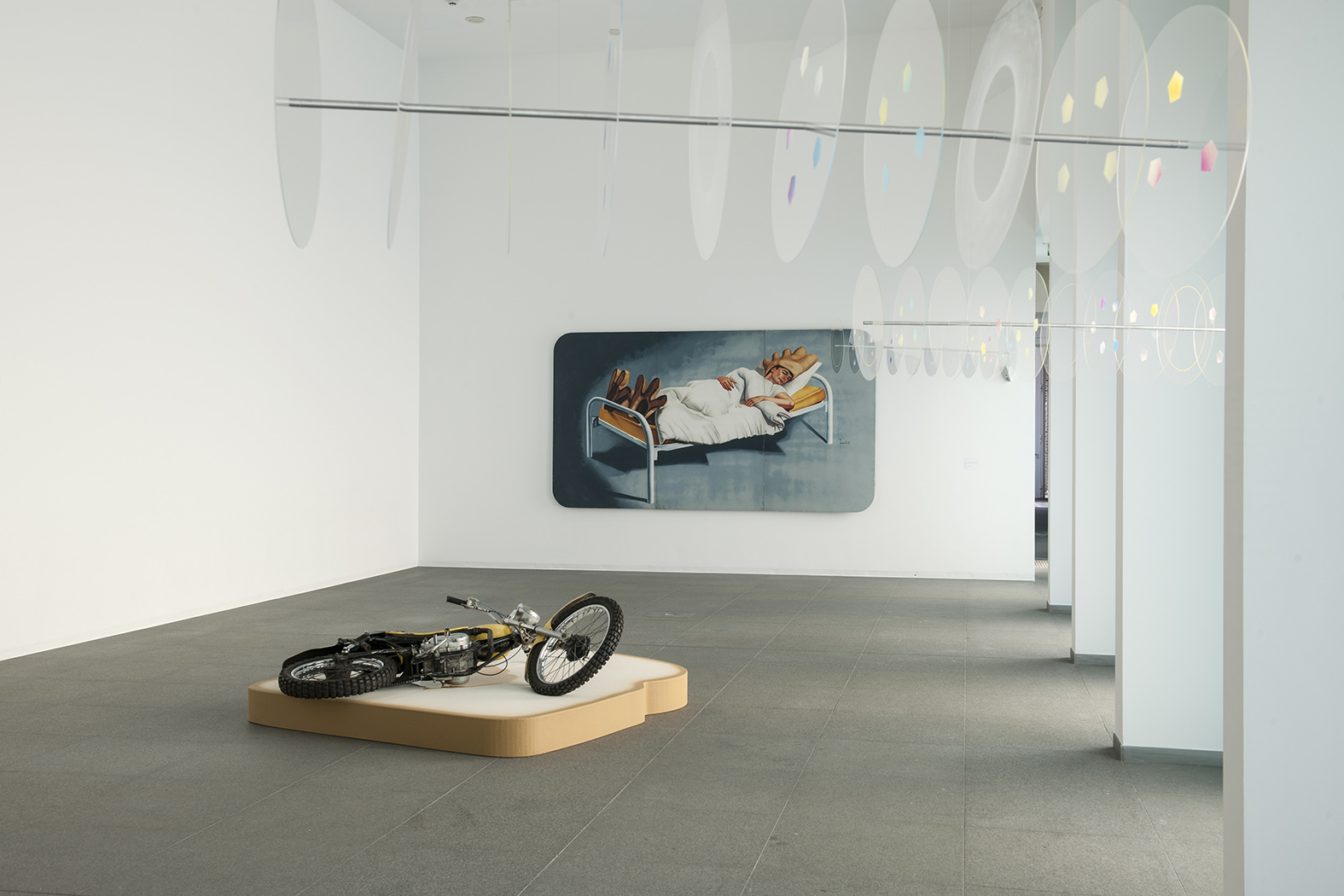
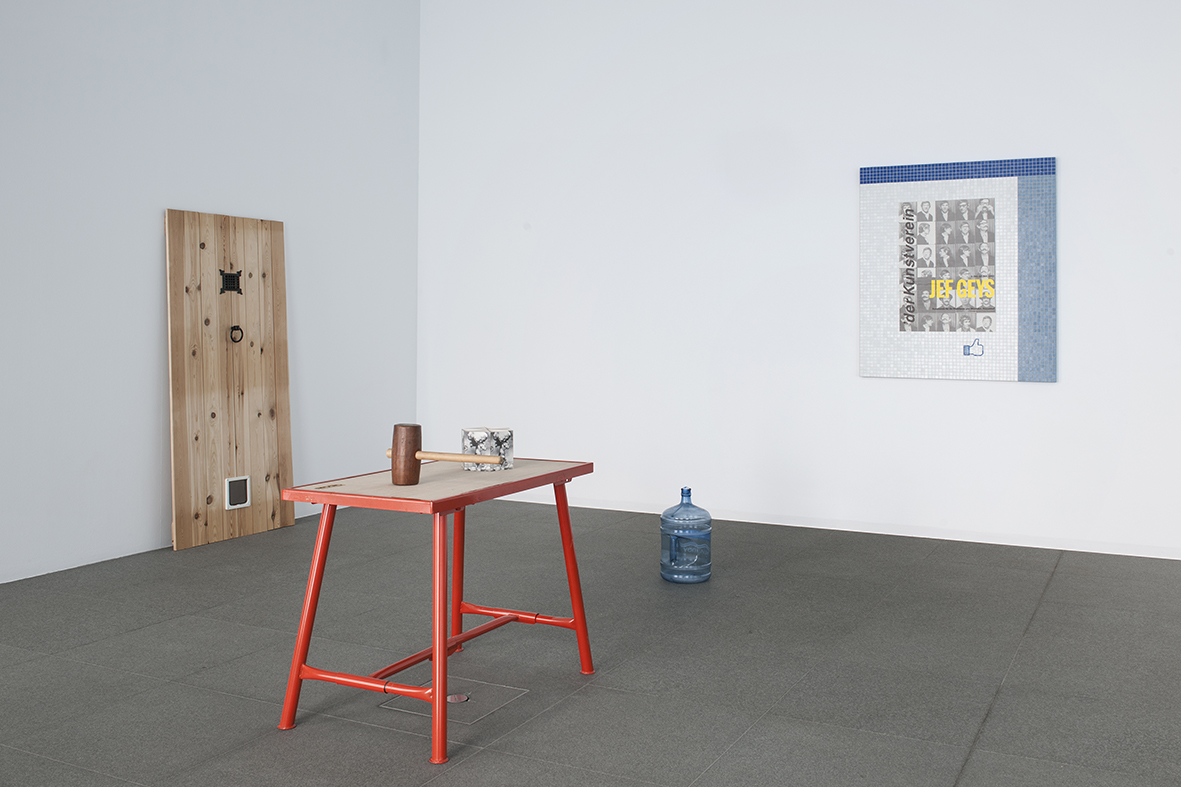
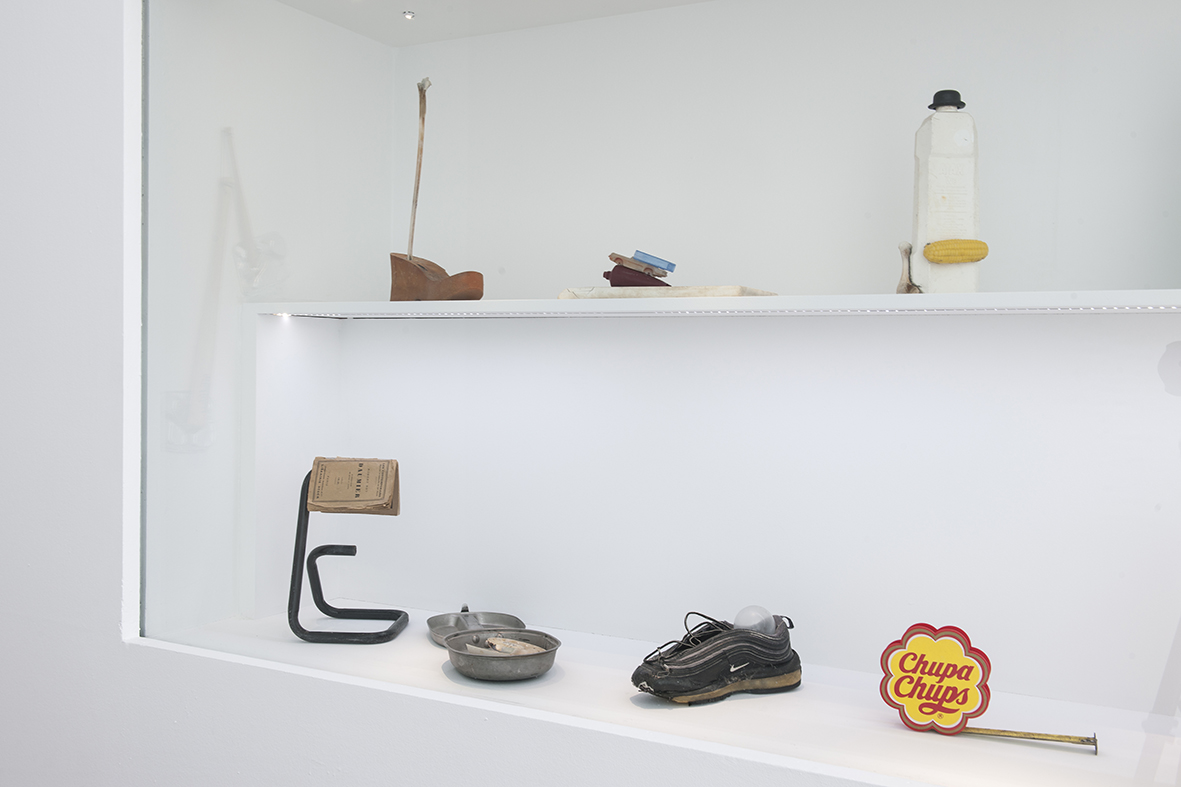
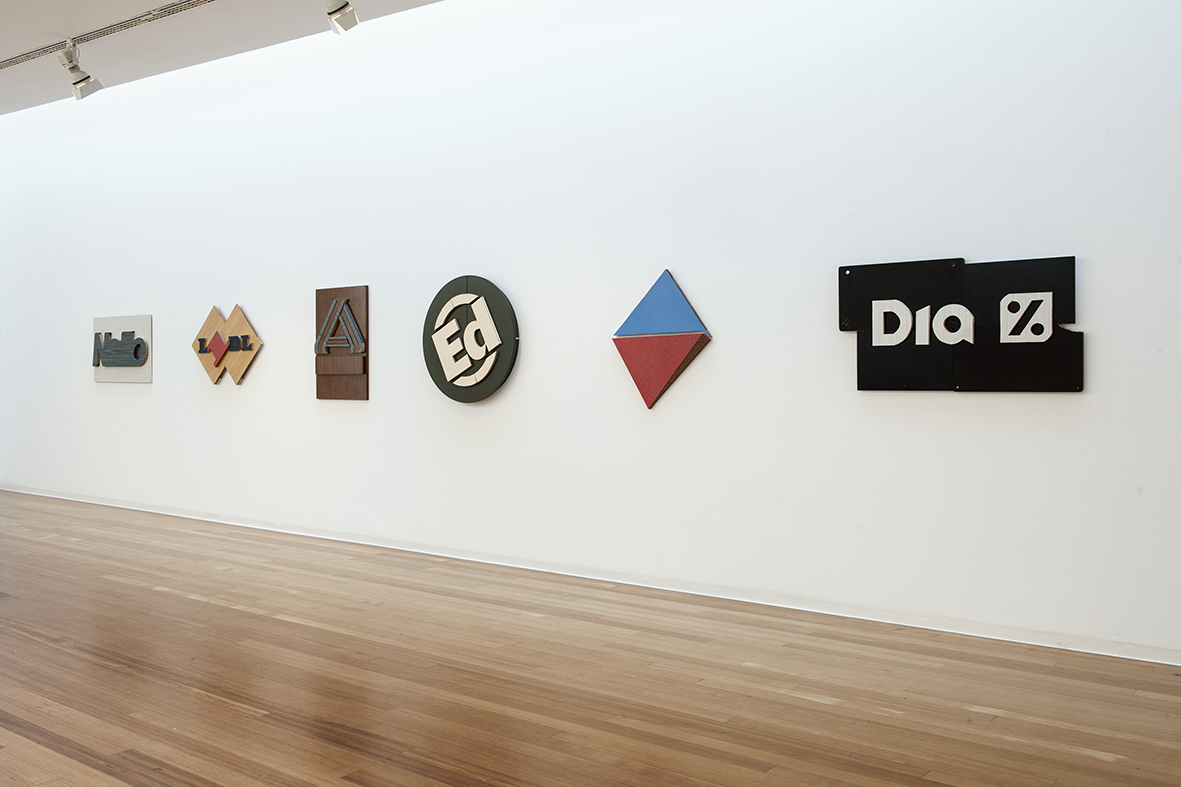
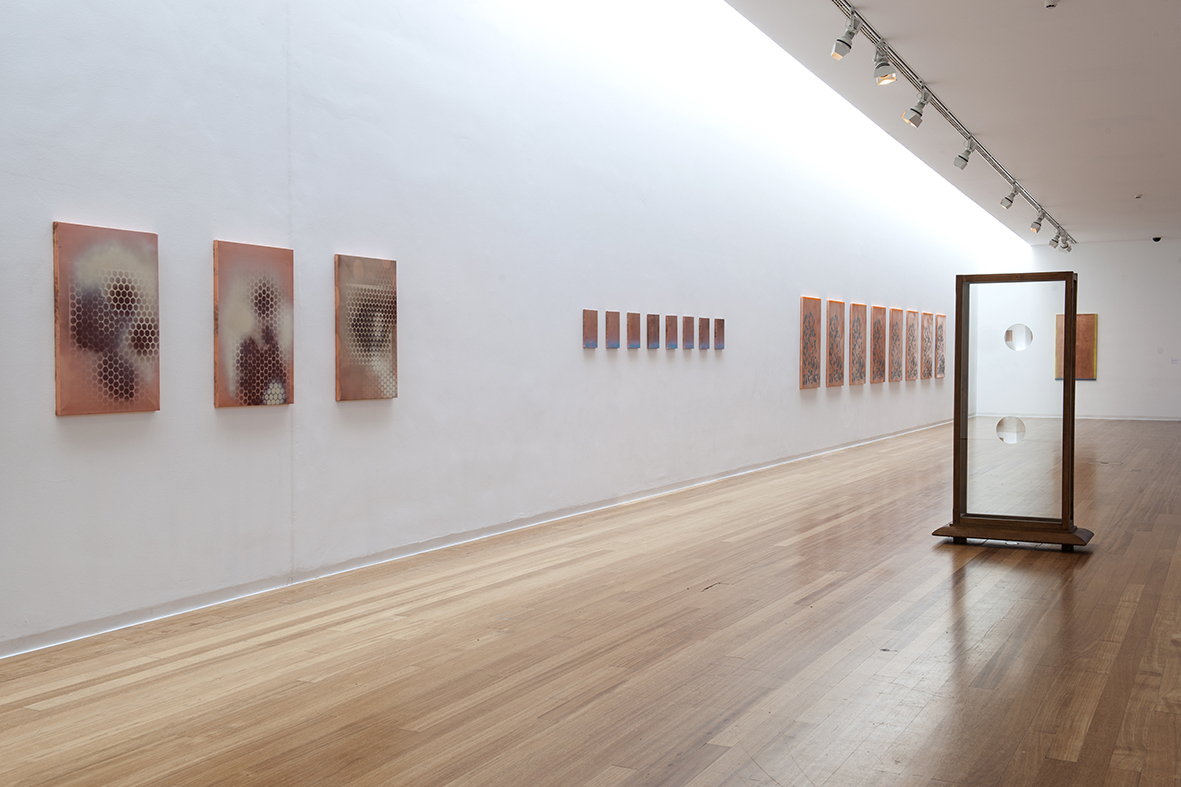
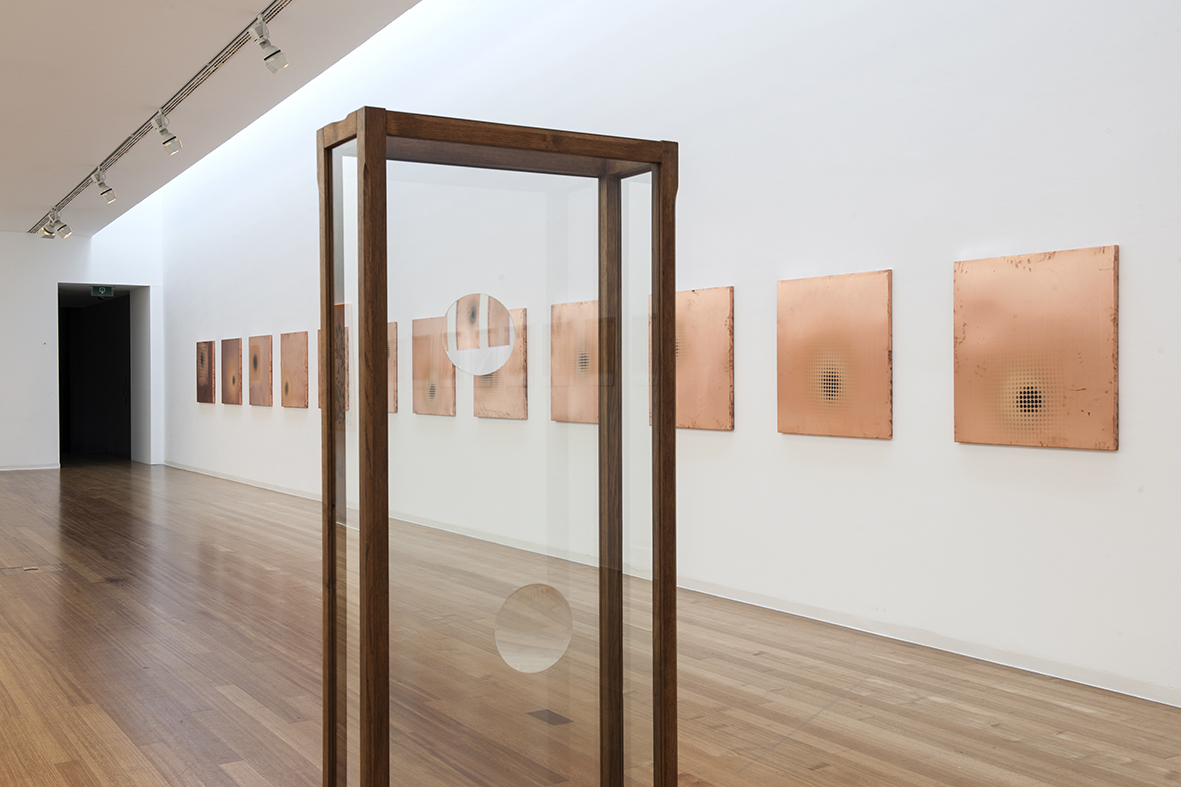
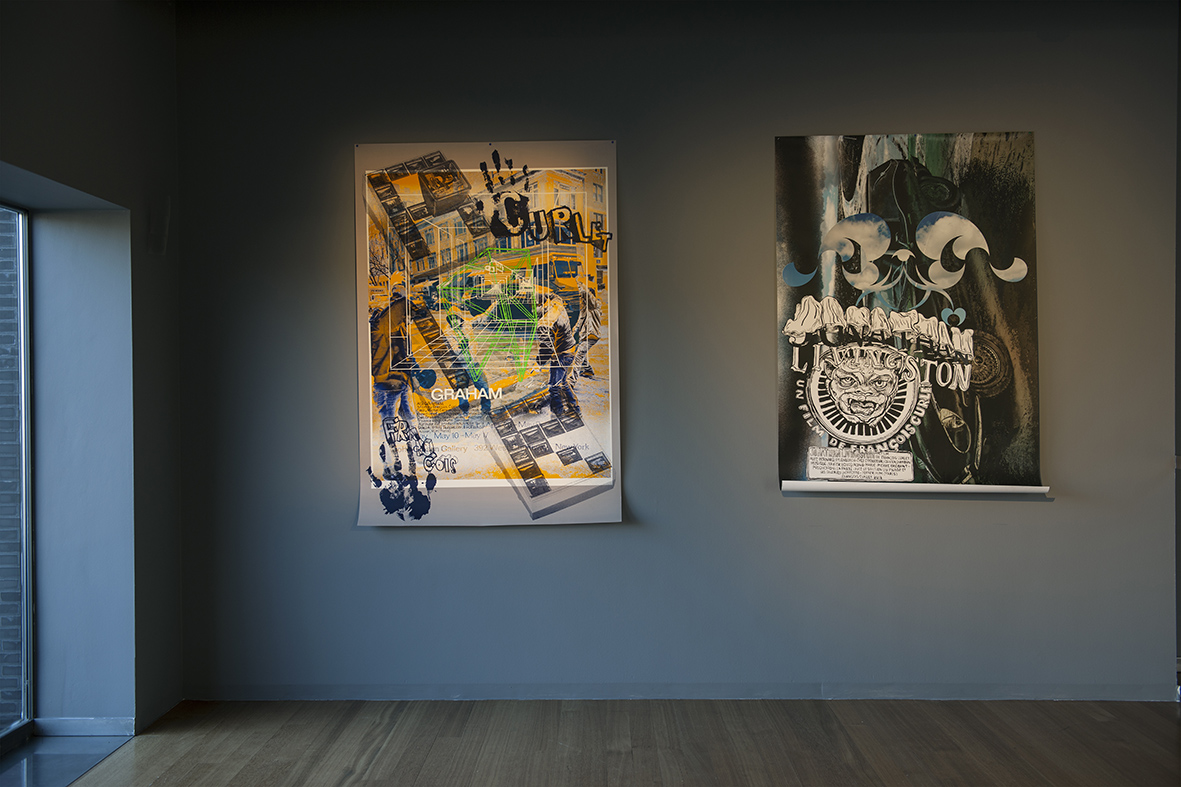
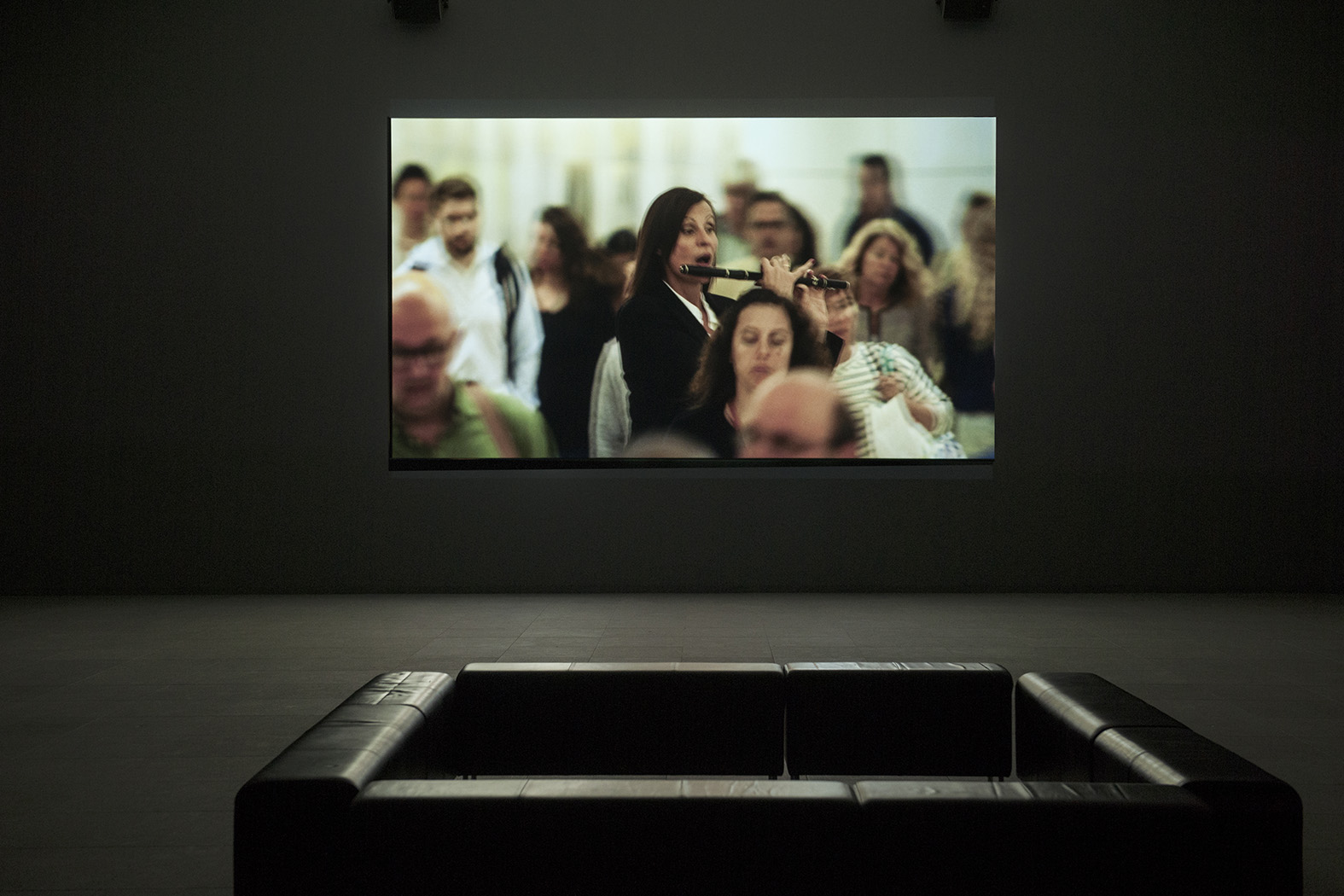
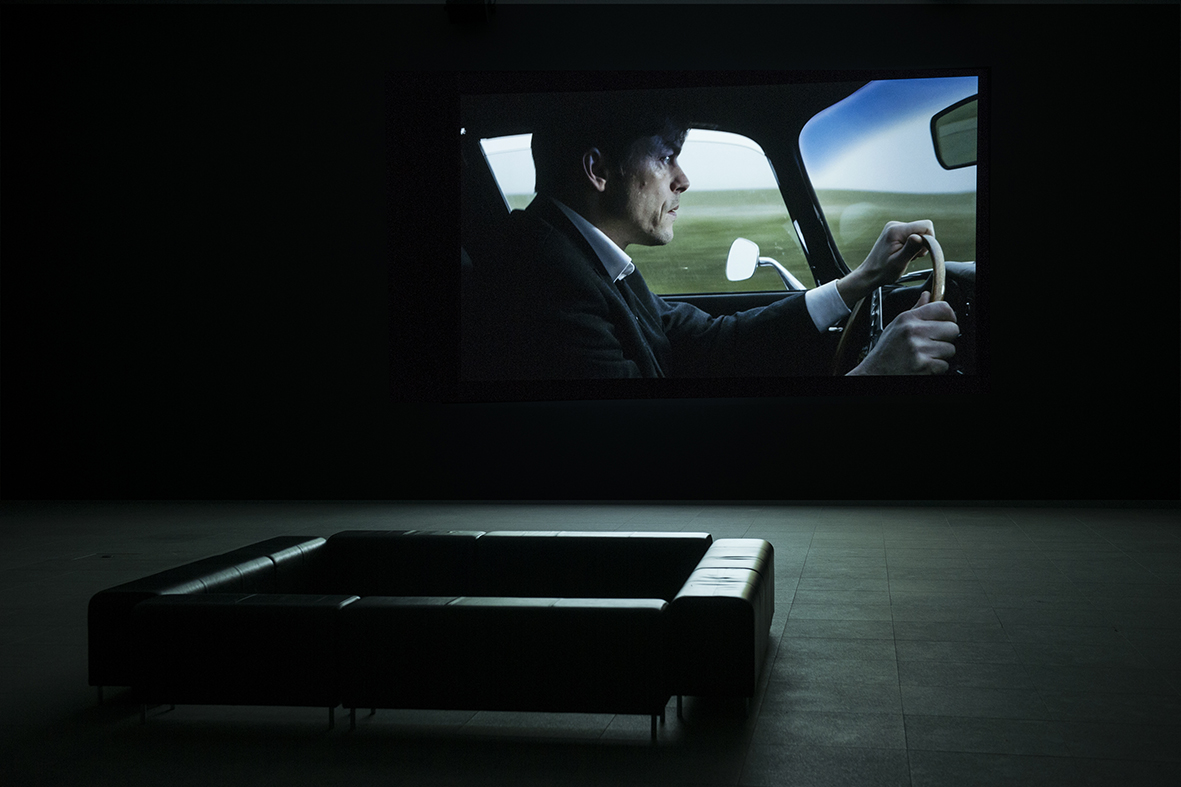
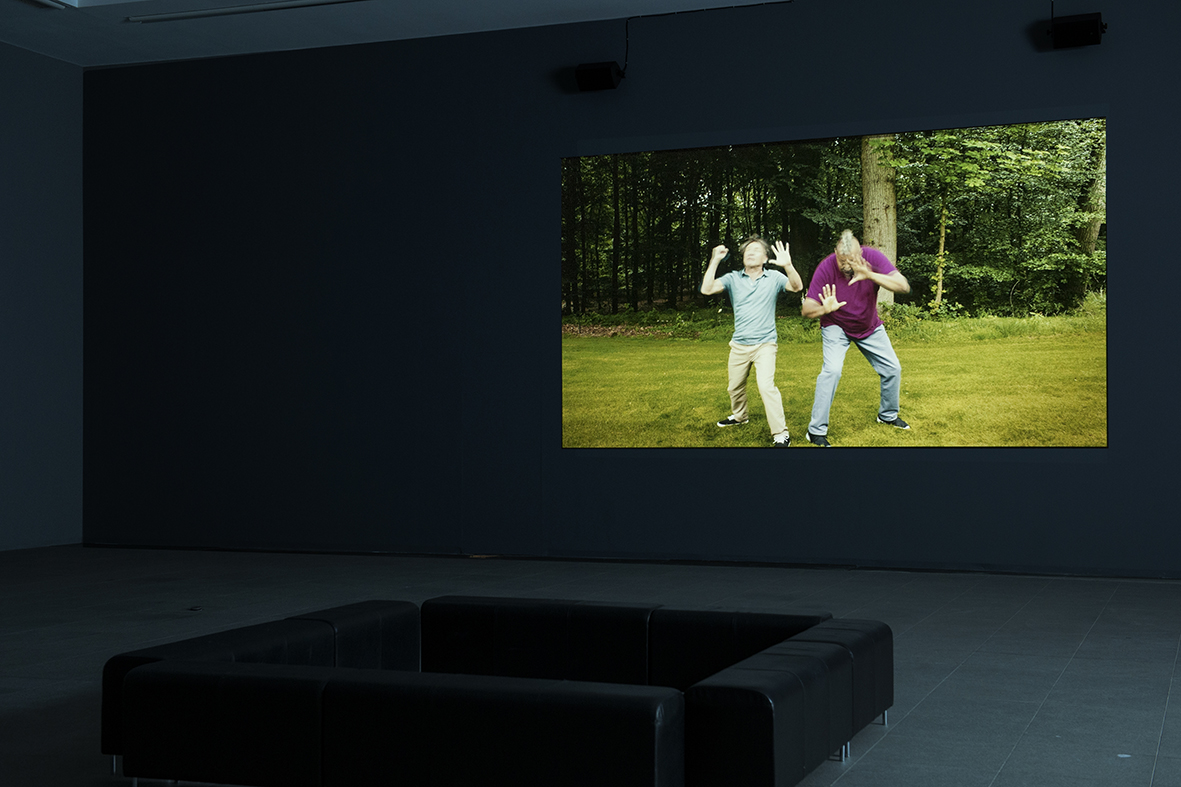
CRÉSUS & CRUSOÉ
MACS GRAND-HORNU, BOUSSU, BELGIUM
NOVEMBER 24, 2018 — MARCH 10, 2019
MACS Grand-Hornu presents François Curlet’s first institutional exhibition in Belgium.
Entitled Crésus & Crusoé, this monographic exhibition is an opportunity to discover a
poetic body of work that plays with the cultural, political and economic signs of today’s
world, following mechanisms of association, displacement and condensation similar to
those observed, since Freud, in the formation of dreams or witticisms.
Almost twenty years after Voisins officiels, the decks of visiting cards he presented to the
inhabitants of the Grand-Hornu coron for the inauguration of the MACS, François Curlet is
once again the guest of the Museum, this time devoting a major retrospective to his work.
Through misappropriation, counterfeiting and counter-use, the artist makes a name for
herself with a sense of humor and poetics that virulently question the social, political and
economic implications of the everyday object and ready-made signs produced by our
consumer society. Heir to the Dadaist jokes of Francis Picabia and the pop onomatopoeia
of Claes Oldenburg, his poetic, incisive approach is based on an art of visual aphorism that
stands up to the intrusive politics of contemporary communication: advertising, video
clips, SMS, Facebook...
As in the catalog co-published with Triangle Books, the exhibition is divided into three
‘sections’ (object, painting, cinema). It begins with an ensemble dominated by the
misappropriation of industrial signs that François Curlet has been practicing since the 1990s
alongside other artists of his generation, such as Franck Scurti, with whom he exhibited his
work at the Centre Pompidou in 1993.
Close to the ragpicker’s aggregates that thinker Walter Benjamin identified, along with
the city flâneur, with modernity, his works archive the era by collecting and recycling its
scraps, like the series of sprays on copper, Frozen Feng Shui, stenciled since 2013 from
scraps of industrial cuttings and likened in his mind to “ghosts of productivity”. Domestic
yet urban, chic yet poor, decorative yet shapeless, these metallic paintings testify above all
to François Curlet’s penchant for the oxymoron, a figure of speech that, like the very title
of the exhibition, brings together Croesus & Crusoe, two contradictory terms.
Obtained by welding together a Jaguar Type E and a hearse, in reference to the film Harold &
Maude (1971), Speed Limit, first presented at the Palais de Tokyo in 2013, does not feature in
the exhibition as a sculpture, but as the subject of the very short film Jonathan Livingston,
in which this incongruous vehicle is driven by a mortician apparently lost in the middle of
nowhere.
Alongside this first film to date, three new productions are also being shown, all equally
sassy and incisive: Air Graham, in which two mimes reproduce a virtual double of a glass
pavilion by Dan Graham; The Yummy Patriot, which sketches the costumed portrait of
a scruffy, gluttonous hussar; and L’Agitée, a film produced by MACS, which updates the
legendary figure of the Pied Piper of Hamelin in the guise of Laurence Bibot.

|

|

|

|

|

|

|

|

|

|
© Photo De Gobert